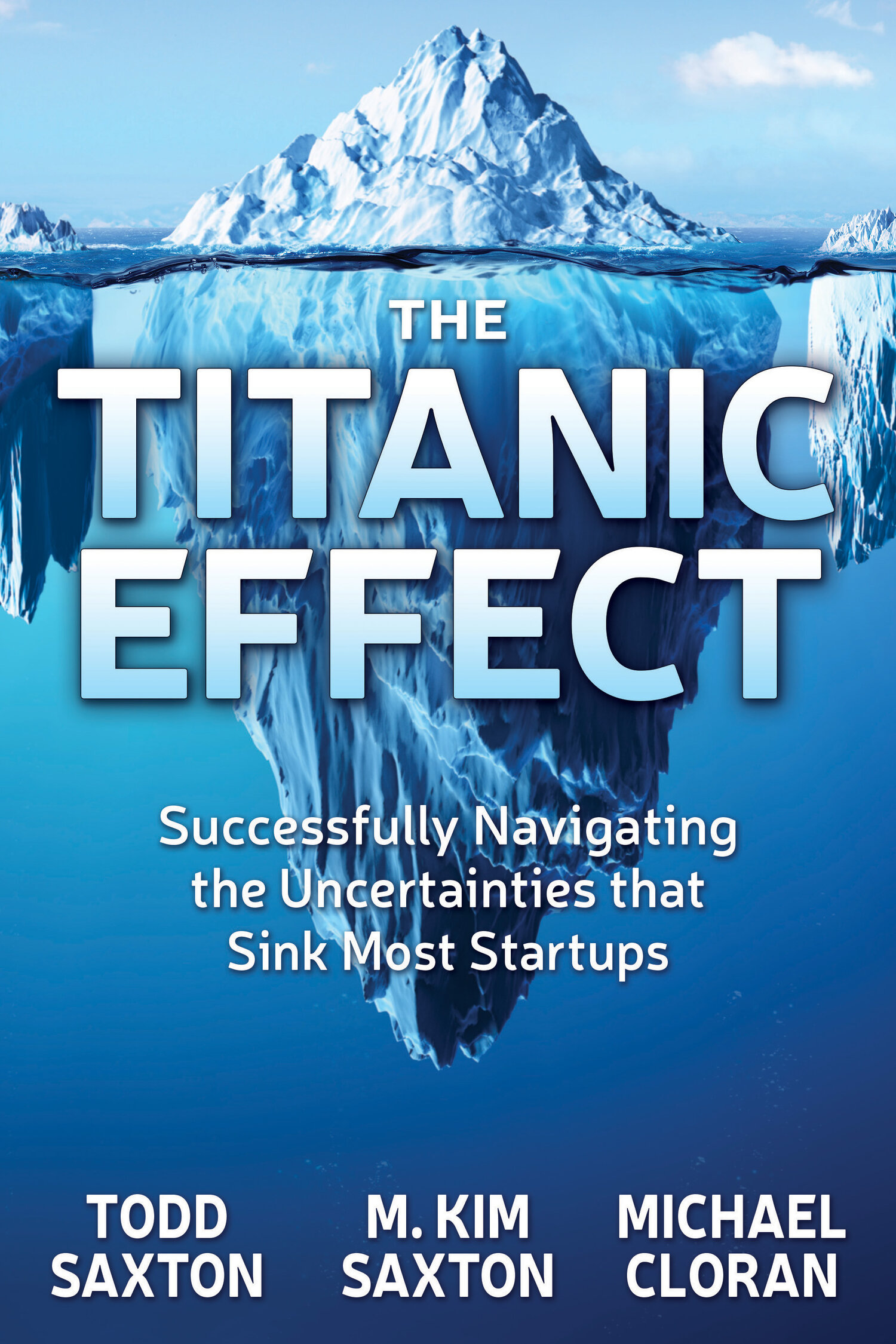As you can imagine, we like to follow news about the Titanic. Thankfully have many followers who share updates with us as well. This week had some interesting news about the Titanic’s Marconi radio. In the roughly 108 years since the sinking, explorers have not been allowed to salvage/explore/ransack the ship (more on that later). But, a group is being allowed to cut open the vessel to extract the radio the ship’s communications crew used to contact passengers’ families. Oh yes, and nearby ships for help as well. The telegraph was newfangled technology to bring on board.
Startups Need to Understand How the Human Brain Deals with Uncertainty
We’ve said it before, but it bears repeating – being an entrepreneur is not about taking risks, it’s about being comfortable with uncertainty. And let’s just admit that we live in uncertain times. In order to manage this uncertainty, or any of the uncertainty that comes with creating and growing a startup, it might help to understand how we process it.
Let’s start with some of the academic research. Over the last 10 years, researchers have been using functional magnetic resonance imaging (fMRI) to see how the brain responds to different kinds of inputs. People are given different kinds of tasks and the fMRI measures what parts of the brain have increased blood flow. The idea is that more blood flow = the part of the brain that is working the most. What this research has shown is that some ideas that we think of as being on a continuum actually work in parallel. For example, when purchasers evaluate how much they trust a seller, the parts of the brain associated with reward, prediction, and uncertainty are working the most. But when they focus on how much they distrust these same sellers, the active areas of the brain are associated with intense emotion and fear of loss.
Is Marketing Spend an Expense or an Investment for Startups?
When macroenvironmental challenges (like a recession or a pandemic) occur, many companies immediately slash their marketing budgets. We saw this in the recession of 2008 to 2009. We are seeing it again in the coronavirus pandemic. The argument goes like this: 1) we are not generating as much sales revenue, 2) we need to cut costs, and 3) let’s just cut all costs.
If marketing dollars are included in these moves, they are being treated like an expense. Well-spent marketing dollars can and should generate sales levels that are multiples of the spend. When this happens they are like an investment with a positive ROI.
Launch a Startup During a Pandemic? It’s Not as Crazy as it Sounds
These are hard times for all of us. The pandemic is taking a global toll on our health and our economy. It is a time of tremendous uncertainty. Why would you possibly start a company during such challenging times?
First, there is a history of great companies being started in hard times. Going back more than a century, GE and IBM, Fortune 100 companies today, were founded during the 1890s, a time of great upheaval and tough times with a major banking crisis. In fact, the original J.P. Morgan of banking fame, Director of the White Star Line who built and operated the Titanic, was instrumental in steering the U.S .economy from the brink of collapse in the late 1890s. Read more about J.P. Morgan and how he affected the Titanic’s demise in our book, The Titanic Effect.
Startups can Leverage Customer Insights to Build a Stronger Relationship
You know that restaurant you love to visit. You walk in the door, they say hello, and they call you by name. You chat with the server. It could be any server, because you’ve chatted with all of them. Now the pandemic hits and you can no longer visit your favorite restaurant. Guess what, they probably don’t even really know who you are.
Most small and new companies have never put together a customer database. Yes, they know frequent customers when they see them. But how does that work when you no longer “see” your customers? It doesn’t. Now is the time to pull together a useful customer database so you can see insights about who your customers are.
Three Pet Peeves in the Startup Vernacular
Most of our blogposts have focused on positive steps startups can take to navigate their launch and success. For example, we have talked about product/market fit, pivoting, and what proof of concept means. But there are some phrases that have become part of the startup world lingo that we believe are misleading or inappropriate. So here are our top three pet peeves:
Belief or Understanding: Why Can’t Startups Have Both?
My first job out of college was working at a consulting firm called Markowitz & McNaughton Inc. (MMI) in the DC area. We did primary market research for our clients, mostly Fortune 500 and similar international firms. Essentially, this meant calling customers, competitors, suppliers, and other market participants to develop a better picture of market forces. We then translated these insights into strategic recommendations for our clients. I was living in Arlington, VA with my brother and two other college friends.
After three or four months, my brother asked me an interesting question: “Sounds like you are doing great—but are you really working for MMI, or did you take the CIA analyst job?” I had interviewed for the CIA role as part of my job search. I did not pursue that position. But apparently I had done a bad enough job articulating what I was actually doing that he did not really understand my job. He believed in me and what I was doing, but did not really understand what that entailed. So his mind leapt to a plausible alternative explanation.
What can founders learn from my trip back along memory lane?
Startups Have to Stay Close to Their Customers, Especially in Uncertain Times
The #1 key to success for a startup is to try a meet an unmet need and avoid a customer value void. As we’ve covered in The Titanic Effect, people don’t change their behavior and adopt new products unless they have a pain point to solve. So it’s always good to be close to your customer. You want their input into what you are doing. But in uncertain times like now, it’s even more important to connect with customers.
Customers are uncertain these days too. They are not sure what they should be doing and not doing. They are struggling with a new normal. So, form a partnership with them.
Here’s a great example from Ali Cudby, author of Keep Your Customers, and an adjunct faculty in Purdue University’s entrepreneurship program…
Industry Growth Patterns 3: Why Startups Should be Aware of the Hype Curve or Hype Cycle
So far, we’ve covered the Bass Diffusion of Innovation and the Crossing the Chasm models. There is one more industry or market growth model startups should know – the Hype Curve or Hype Cycle. Remember you may get either little or great traction, not just because of what you’ve done, but also because of what is happening in the broader market.
The Hype Curve or Hype Cycle is one of our more recent models, coined by research firm Gartner. In this model, markets experience initial dramatic growth. However, after the initial excitement or hype wears off, sales of the product drop as only enthusiasts and hard-core users in a niche market continue to purchase it. If competitors survive, the market settles into a lower volume than at peak. It’s smaller but still a respectable and sustainable level of sales.
Industry Growth Patterns 2: Why Startups Should be Aware of the Crossing the Chasm Model
Last blogpost we suggested that, in addition to all of the decisions they are making within their startups, founders should also track market growth. Most industries or markets go through typical growth patterns. Understanding if you are in the middle of the market’s growth stage or on the tail end is important. First, it helps in forecasting sales. But it also helps for appropriately planning the promotional efforts you will need to make. When a market has had limited growth, it often takes having multiple companies trying to educate the market. With low growth, you need more investments to offset competition.
We’ve already talked about the Bass Diffusion of Innovation model. A second growth trajectory was dubbed Crossing the Chasm by author Geoffrey Moore (1991).In these markets, the early growth and promise of a market stall until some intervention enters the picture…









